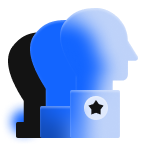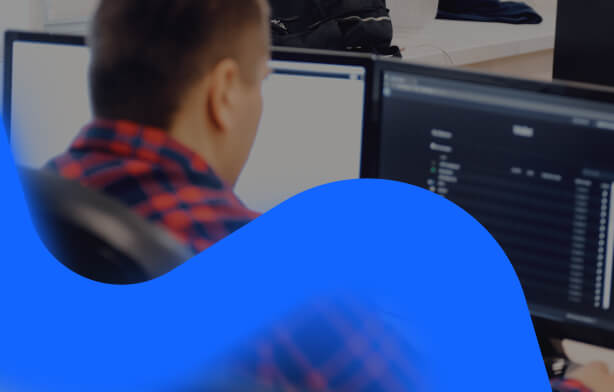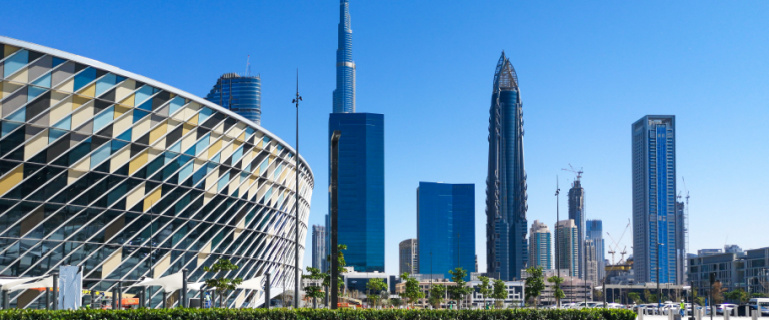The NFT market is on a rapid growth path now, and businesses are exploring new ways to use these non-fungible tokens in entertainment, gaming, and customer loyalty programs. With a projected annual increase of 34.5% through 2030, NFTs are shifting from niche collectibles to mainstream digital assets with real-world applications.
Brands have an exciting opportunity to engage customers through unique, digital loyalty rewards. In this article, we’ll explore how NFTs transform customer loyalty through NFT loyalty programs.
Understanding NFTs and Loyalty Programs
Loyalty programs are organized marketing strategies used in customer retention. They offer rewards to foster continuous loyalty from customers. Generally, such programs suggest points, discounts, or special offers based on the purchases or other interactions customers make.
NFT loyalty goes beyond traditional rewards by offering digital assets that customers can own, collect, trade, or display. Unlike points or discounts, NFTs add an extra layer of value by giving users a tangible digital reward they can even resell if they choose.
Fashion, art, and sports brands like Gucci, Adidas, and the NBA were among the first to embrace NFT loyalty. They recognized that customers are eager to participate in exclusive promotions and collect rare digital items from their go-to brands.
Below are the main types of NFT loyalty programs, each designed to motivate different behaviors and to resonate with brand identity and customer preferences, coupled with interaction goals.

Membership-Based
Programs
These NFT loyalty programs give members access similar to a digital membership card, allowing them to own specific NFTs. Brands can provide NFT holders with exclusive perks, special discounts, or even an invite-only experience because it promotes exclusivity.

Earn & Burn
Programs
Such loyalty programs involve rewarding customers with NFTs for their purchases or engagement, which they can later “burn” to access exclusive benefits, discounts, or special experiences. This approach creates a sense of scarcity and excitement, encouraging ongoing participation.

Experience-Based Rewards
In this NFT loyalty model, customers are rewarded with NFTs for participating in brand-related events, campaigns, or challenges. This can include private events, brand-led workshops, or virtual sessions with influencers and brand ambassadors.

Collectible
Programs
These NFT loyalty programs encourage customers to collect a set of NFTs. Once they have a complete collection, they can redeem it for unique rewards or swap it for a high-value NFT. In such cases, this drives involvement and gamifies customer loyalty.

Points-Based Programs with NFT Rewards
Alternatively, in points-based programs, customers accumulate points for their interactions or purchases, redeemable for exclusive NFTs. This model allows customers to work toward rewards at their own pace.

Tiered Loyalty
Programs
NFT-based tiered programs offer rewards based on the type or number of NFTs held. Higher tiers typically unlock greater benefits, motivating customers to collect more or rarer NFTs.
How to Use NFT in Loyalty Programs
Creating tiered NFT systems is one such strategy. Brands are allowed to build multi-level NFTs aimed at varied levels of interaction or loyalty. Customers may be offered a base-level NFT for their first purchase, and frequent buyers will get upgraded tokens, providing them with extended benefits like early access to new products.
Another approach is dynamic NFTs, which change depending on customers’ behavior. For example, if a customer frequently shops or interacts with the brand on social media, their NFT could evolve to offer additional discounts or special perks. This will definitely make them more attached to the brand.
Another strategy involves crafting profile images that align with customers’ interests and preferences. This way, buyers of green eco-products may have nature-themed images. These NFTs function just like membership badges, giving a better way to connect with a brand.
Another great strategy is token gating, where access to certain content or functionality is granted only to the holders of a certain NFT. The feeling of FOMO adds value to the rewards and stimulates the customer to become even more committed to your brand.
How to Launch NFT Loyalty Programs
Step 1: Define Your Goal
To boost customer engagement, create unique NFTs that offer access to special content or events, driving participation in various ways. If you aim to attract a new audience, consider developing NFTs that appeal to specific user segments, such as exclusive collections or tailored offers. As you see, your strategy will depend on which goals you’re looking to achieve and how you envision the implementation of your initiatives.
Step 2: Know Your Target Audience
Meet Alex, the Web3 native user. Alex is a seasoned NFT collector, always on the lookout for the next big drop. He’s well-versed in the world of decentralized wallets, managing his assets like a pro. On the other hand, we have Oliver, who’s curious about NFTs but feels overwhelmed by the tech. He’s never used a decentralized wallet and is unsure where to start.
This is the simplest way to segment your audience. For more compelling targeting, host surveys and interviews that will help ascertain what customers prefer to drive motivation, their desirable rewards, and the kind of loyalty programs with which they’d better interact.
Step 3: Choose Blockchain
When it comes to selecting the perfect blockchain for your NFT loyalty, several key factors can make or break your success. First and foremost, you’ll want to keep an eye on transaction costs. High fees can quickly eat into your profits, so opting for a lower-cost blockchain, like Solana or Polygon, seems reasonable.
Next, look into the broader ecosystem and community within your target platform. The more active a community, the larger the user base — meaning the more popular your NFTs will be. A rich ecosystem will give you the possibility to collaborate with other projects, expanding the value you will be able to create for your NFT beyond your brand. Your top choice here can be Polygon or Binance Smart Chain (BSC).
And, of course, the talent pool! Skilled developers who would work with popular programming languages can help with smooth development and ongoing support for your NFT loyalty project. Solana or Polygon can boast a rich developer community that is ready to aid.
The final choice is Layer 1 or Layer 2 solutions. If cost, speed, and scalability are your primary concerns, opting for a Layer 2 solution is generally the best choice for NFT loyalty (e.g., Polygon, Optimism).
Step 4: Design the NFT
- Create unique visuals: Develop distinctive images or animations for your NFTs that resonate with your brand identity and capture attention. NFT launchpad significantly simplifies the process of creating NFT tokens by providing ready-made tools and templates that enable brands to swiftly develop their tokens.
- Implement tokenomics: Define holder benefits like discounts, exclusive content, and rewards for holding NFTs. Establish governance rights to engage the community. Consider the NFT’s lifecycle from launch to redemption, providing it can either be reused or burned after completion.
- Offer limited editions: Introduce a limited edition NFT series to instill a sense of exclusivity and enhance perceived value among collectors and enthusiasts.
Step 5: Set the Program Type
It’s time to choose the type of NFT loyalty program, and it all depends on your goals. If you want to reward consistent engagement, go for Points-based programs. If exclusivity is key, opt for Membership-based programs. If engaging customers through events is your primary care, choose Proof of Attendance Protocol Programs.
Step 6: Develop a Unique Value Proposition
Remember: your NFTs should provide real value. The offering should be unique enough to ignite participation, whether access to exclusive products, events, or digital experiences. For example, NFTs can represent VIP access to events or limited-edition products.
Step 7: Track NFT Loyalty Program Performance
Monitor user engagement, transaction patterns, and overall program performance. You can find out which benefits program members like and tweak things to keep people happy and make them come back for more. It’s all about making it a win-win for everyone involved!
Making It Work: Addressing Implementation Challenges
You may say: “Let’s not spoil the party!”. Unfortunately, we would.
1. Onboarding for the NFT loyalty program presents significant challenges, as many users are unfamiliar with blockchain technology and the requirements of digital wallet management. From launching a cryptocurrency wallet to learning about the security of private keys, the process can feel overwhelming, particularly for users new to decentralized tech.
What can be done to make life easier for those who join the NFT loyalty program? Let’s turn to our Alex and Oliver.
When Alex joins your NFT loyalty platform, he sees a simple interface that allows him to connect his wallet effortlessly. With just a few clicks, his NFTs appear on the dashboard, ready for him to explore. Alex appreciates that he doesn’t have to navigate complex processes; everything feels intuitive.
With relief, Oliver clicks on the “Get Started” button — your platform partners with a wallet-as-a-service provider, offering a secure way to manage digital assets. Thus, Oliver can buy or receive his first NFT without worrying about private keys or complicated blockchain concepts. Oliver is greeted with step-by-step tutorials that guide him through the process.
That’s how your NFT loyalty onboarding process should look — tailored for each audience category to let each user feel valued and included.
2. Many potential users face barriers when it comes to purchasing NFTs, particularly due to the complexity of cryptocurrency transactions.
For some, like Alex, using cryptocurrency through platforms like Coinbase Commerce is OK. He appreciates the option to apply different cryptocurrencies, making his transactions smooth and straightforward. On the contrary, customers like Oliver will certainly prefer more conventional methods, such as credit cards.
What can be done?
Provide multiple payment options with customer segmentation in mind (again!). If someone’s new to cryptocurrency, they should be able to pay just like they would on Airbnb or any other site they know. It shouldn’t be their challenge. It’s your challenge that can be solved, indeed.
3. If users don’t have confidence in the security of their transactions and personal information, they may hesitate to engage fully. While beginners like Oliver need confidence that neither their personal data nor financial transactions will ever be compromised, for users like Alex, smart contracts not only have to be reliable but also transparent and verifiable.
What can be done?
Integrate fiat on-and-off ramp solutions to allow users to buy NFTs and cryptocurrency with their credit cards. This makes it easy for anyone to jump into the digital asset world without having to figure out complex exchanges.
In the end, you need to create a place where everyone is welcomed by catering to their various needs through smooth onboarding, flexibility in payment options, and a secure environment.
Key Components for a Successful NFT Loyalty Program
Alex, Oliver, and anyone else joining NFT loyalty will appreciate the following features.
Diverse Reward Structures
Offering options such as NFTs, discounts, exclusive experiences, or loyalty points can help reach a wider audience. For instance, some customers may look at digital collectibles as tokens of appreciation, while the most impressive reward for others will be something more tangible, like discounts on their future purchases.
Flexible Payment Options
Providing both cryptocurrency and traditional payment methods, including credit cards and digital wallets, allows customers to easily use whatever payment they feel comfortable with. This minimizes friction during transaction processes, which in turn leads to more active participation in the NFT loyalty program.
Security Measures
Encryption protocols protect sensitive information from unauthorized access, while multi-factor authentication — specifically for users accessing the app through wallet-as-a-service solutions — keeps user accounts secure during interactions on your NFT loyalty platform. Regular security audits and prompt updates further strengthen the platform’s defenses against potential threats.
User-friendly Interface
Navigation, clear instructions, and easily available support options would indeed make users confident in their interactions on the NFT loyalty platform. Similarly, a well-structured onboarding process may familiarize the new user with the program’s features and, therefore, lead to higher engagement.
Community Engagement
Social media, events, and interactive campaigns build this sense of belonging by connecting the audience and the brand. Promote user-generated content, such as sharing experiences and rewards from earning. This not only creates a more loyal base but also offers a supportive environment to users with appreciation and recognition.
Data Analytics
Analyzing user interactions allows for spotting the most related trends and insights that will help further develop the NFT loyalty program. Personalization can take the form of customized reward offerings, tailored communications, and relevant content that engages users.
Marketplace Functionality
Consider building a place or partnering with existing NFT marketplaces, enabling users to buy, sell, and trade their NFTs. To that end, integrations with platforms such as OpenSea or Rarible power user involvement by creating a rich environment where customers can interact with their NFTs outside your brand.
Gamification
Integrate gamification elements into your NFT loyalty program to make it more interactive and playful. An NFT launchpad can help brands easily try various promotions and contest formats, for instance, introducing new collections for various events or adapting their offerings based on the evolving needs of their audience.
Summarizing
The well-arranged NFT loyalty isn’t just a way to reward customers; it’s a whole ecosystem where they can own, trade, and engage with digital assets. It attracts everyone: Web3 veterans and newcomers just dipping their toes into the space. A successful NFT loyalty strengthens the brand’s and its customers’ bond while fostering an active community that encourages long-term loyalty and engagement.
Our NFT Loyalty Program provides integration, customization, training, and support tailored to your needs. Let’s collaborate to maximize your loyalty initiative.







